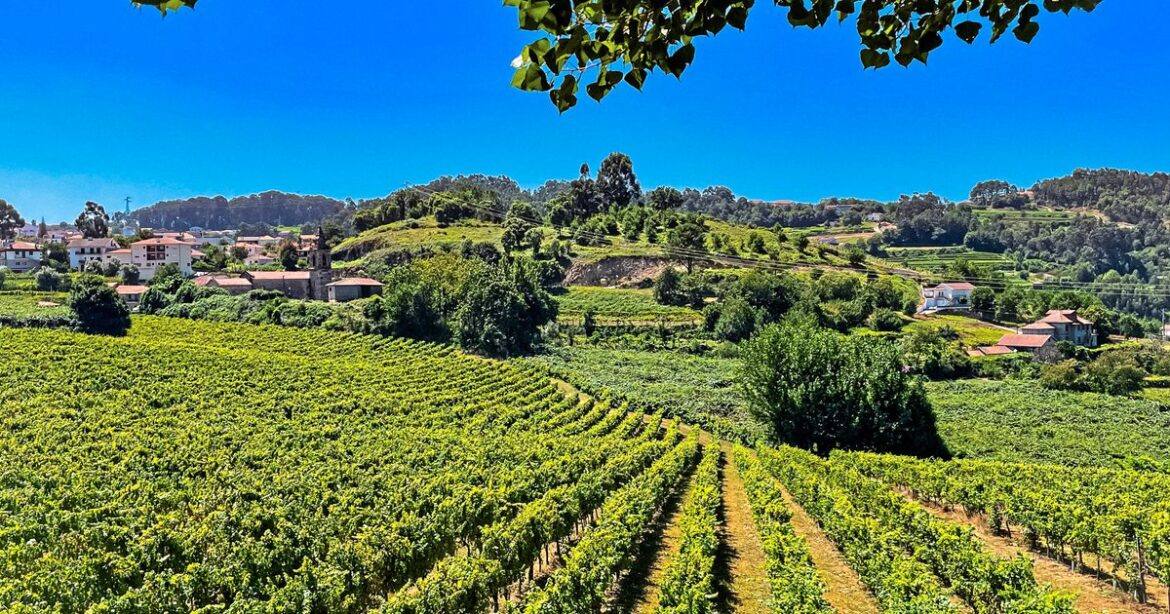If you were drinking wines from DOCs Lafoes, Tavora-Varosa, Encostas de Aire, Arruda or Lourinha in which country would you likely to be?
The answer is the country which I believe is now producing the most interesting and best value wines in the world – Portugal.
Yet how often have you seen any of the above regions on a wine list in the British Isles?
As you read this I, along with three mates, should be making our way back from Lisbon after a week of golf, sun and a fair bit of eating and drinking.
With a bit of luck we may have been sampling one, or possibly more, unique wines from a country which has undergone a vinous revolution in the past 20 years or so – on its own terms.
Although you can find chardonnay, sauvignon blanc, merlot and pinot noir in Portugal that’s not the point – this is a country which believes in itself. It has around 250 different indigenous grape varieties, more than any other country in the world, so if you truly want to understand Portuguese wine, you are going to have to make a bit of an effort.
For instance Bucelas, a wine region not far from Lisbon, was beloved by the British at the time of Lord Wellington – it’s a light crisp dry wine made from the arinto, sercial and rabo de ovelha grape varieties (see what I mean).
Believe me it’s worth the effort as you will taste flavours you get nowhere else and you will not have to spend a fortune to do so. The vast majority of Portuguese wines, rather like those of Italy, are designed to be drunk with a meal so bear this in mind when you drink them.
Not only are the varieties difficult to pronounce for an English speaker but the same variety can have a different name in another region. For instance the fernao pires grape which makes crisp aromatic whites, is known as maria gomes in the region of Bairrada, while aragonez is known as tinto roriz in northern Portugal (and tempranillo across the border in Spain).
Portugal has been producing wine for a very long time (since 2,000BC when the Tartessians planted vines in the Tejo and Sado regions). The Douro becoming a demarcated region in 1758 – it’s now a Unesco world heritage site.
Its success was helped by the Methuen Treaty between Britain and Portugal which allowed Portuguese ports and wines to be given a much lower rate of duty than their French counterparts.
Wine is produced virtually all over the country from the wet, green vinho verde country bordering Spain in the north down to the heat and dust of the Algarve in the south. It’s also made in the offshore islands including Pico in the Azores which is another world heritage site.
There are three quality levels. At the top is DOC – there are 31 of these and must have defined geographical boundaries with restrictions on the grape varieties used and the yields permitted. The level below is Vinho Regional, of which there are 14 – these have a larger geographical area and restrictions on grapes, and yields are fewer. The lowest level is simply Vinho which is a table wine which can come from anywhere in the country.
All styles of wine are produced from sparkling to intensely sweet so it is perfectly possible to construct a meal with a different Portuguese wine with each course.
There are a few Portuguese wine terms it helps to understand:
Adega – a winery
Branco – white
Casta – grape variety
Colheita – vintage year
Doce – sweet
Espumante – sparkling wine
Garrafeira – a reserva red wine aged for at least two years in barrel and one year in bottle, or a white wine aged for at least six months in barrel and six months in bottle
Quinta – vineyard (in the Alentejo region they use the term herdade)
Seco – dry
Tinto – red
Over the next week or two I want to take you through the main wine-making regions – the ones you are likely to find within these shores. We will start with an area whose wines I will almost certainly have been drinking over the past week – vinho verde or ‘green wine’.
Vinho verde is normally made with the alvarinho grape (Spain’s albarino) but I really enjoy those where the loureiro grape has been added, which gives extra aroma and texture.
The Coste Verde (Green Coast) is where these wines are found – it’s a lush area with much higher rainfall than the rest of the country. As a result the grapes have moderate sugar levels and alcohol levels are often around 10-11%. They often have a slight spritz to them which makes them very refreshing in hot weather but this style is now becoming less popular as winemakers attempt to make more serious gastronomic completely still wines – which is a shame in my opinion.
Red vinho verde is made and the locals tend to drink it with grilled sardines, but it is very astringent with high tannins and acidity. It is one of the few Portuguese wines I have never come to terms with.
Perhaps, by the time you read this though, red vinho verde will no longer be in my vinous Room 101.
I may have even drunk a wine from Tavora-Varosa or Encostas de Aire.

